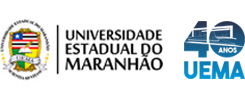Use este identificador para citar ou linkar para este item:
https://repositorio.uema.br/jspui/handle/123456789/5598| Título: | Estudo da formação da aresta postiça de corte: suas influências sobre os parâmetros de usinagem |
| Título(s) alternativo(s): | Study of the formation of the built-up cutting edge: its influence on machining parameters |
| Autor(es): | Forte, Paulo Ricardo Almeida |
| Orientador: | Rodrigues, Jean Robert Pereira |
| Membro da Banca: | Rodrigues, José Roberto P. |
| Membro da Banca: | Cunha, Adilto Pereira Andrade |
| Data do documento: | 2015 |
| Editor: | Universidade Estadual do Maranhão |
| Resumo: | No processo de usinagem existe uma série de fatores indesejáveis que podem influenciar na qualidade do produto final. Dentre essa gama de fatores, foi escolhido o estudo do mecanismo de formação da aresta postiça de corte (APC) como o principal foco deste trabalho. Para auxiliar na compreensão desse estudo, foi feito uma pesquisa bibliográfica sobre as condições de corte necessárias para o surgimento desse fenômeno. Fatores como: temperatura de corte, velocidade de corte, material da peça, campo magnético, escoamento plástico, adesão do material da peça na ferramenta e o surgimento de micro fissuras na peça, foram comprovados suas influências na formação da APC. Além desses fatores, foram estudadas também as alterações nos parâmetros de corte que esta proporciona durante a usinagem. Parâmetros como o ângulo de inclinação, força de corte, ângulo de cisalhamento, velocidade de corte, desgaste da ferramenta de corte e o mau acabamento superficial da peça, são afetados diretamente pela APC. Porém o mau acabamento superficial da peça e o desgaste precoce da ferramenta de corte são sem dúvidas os piores danos causados pelo surgimento da APC, uma vez que estes tem uma maior influência nos custos de produção. Dessa forma, achou-se necessário também, o estudo dos métodos utilizados para a extinção ou redução da APC nos processos de usinagem. Fatores como o aumento da velocidade de corte, o revestimento da ferramenta de corte (PVD, CVD) e a utilização de fluidos de corte, exercem grande influência contra o mecanismo de formação da APC e seus danos causados. Nesse contexto, é importante destacar o papel exercido pelo fluido de corte, que apesar de não evitar o surgimento da APC, irá reduzir, durante a usinagem, a aderência de fragmentos desprendidos da APC na superfície da peça, e consequentemente reduzirá a rugosidade da mesma |
| Resumo: | There are a number of undesirable factors in the machining process that may influence in the quality of the final product. Among this range of factors, this paper focuses primarily on study the mechanism of formation of the built-up edge (BUE). To assist in the understanding of this study, was analyzed the necessary cutting conditions for the emergence of this phenomenon. Factors such as cutting temperature, cutting speed, workpiece material, the magnetic field, plastic flow, adhesion of the workpiece material on the tool edge and the appearance of microcracks in the workpiece, have proven their influences on the formation of BUE. In addition to the factors that influence on the formation of the BUE, it was also studied the changes in the cutting parameters that it provides during the machining processes. Parameter such as the rake angle, shear force, shear angle, cutting speed, cutting tool wear and poor surface finish, are directly affected by the BUE. However the poor workpiece surface finish and accelerated wear of the cutting tool are undoubtedly the worst damage caused by the appearance of the BUE, since they have a greater influence on the production costs. Therefore, it was also necessary to study the methods used to eliminate or reduces the BUE in machining processes. Methods such as a increasing in the cutting speed, the coating of the cutting tool by thermal treatments and the use of cutting fluids, exert great influence against the BUE formation and the damage caused by it. In this context, it is important to highlight the important role played by the cutting fluid, which even although not avoid the appearance of the BUE, during machining in the presence of this phenomenon, the use of it reduces the adhesion of detached fragments of the BUE on the surface of the piece, and consequently reducing the roughness of it |
| Palavras-chave: | Aresta postiça de corte Usinagem Parâmetros de corte Acabamento superficial, Força de corte Build up edge, Machining Cutting parameters, Surface finish Cutting force |
| Aparece nas coleções: | Curso de Bacharelado em Engenharia Mecânica - CCT UEMA - Monografias |
Arquivos associados a este item:
| Arquivo | Descrição | Tamanho | Formato | |
|---|---|---|---|---|
| TCC - PAULO RICARDO ALMEIDA FORTE - BEL. ENG. MECÂNICA- CCT UEMA 2015.pdf | PDF A | 1.11 MB | Adobe PDF | Visualizar/Abrir |
Os itens no repositório estão protegidos por copyright, com todos os direitos reservados, salvo quando é indicado o contrário.
